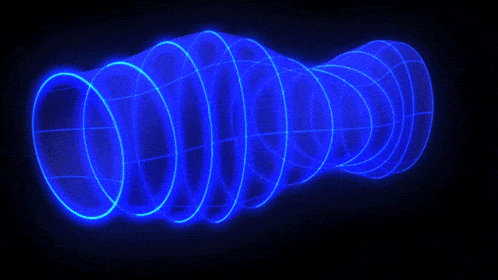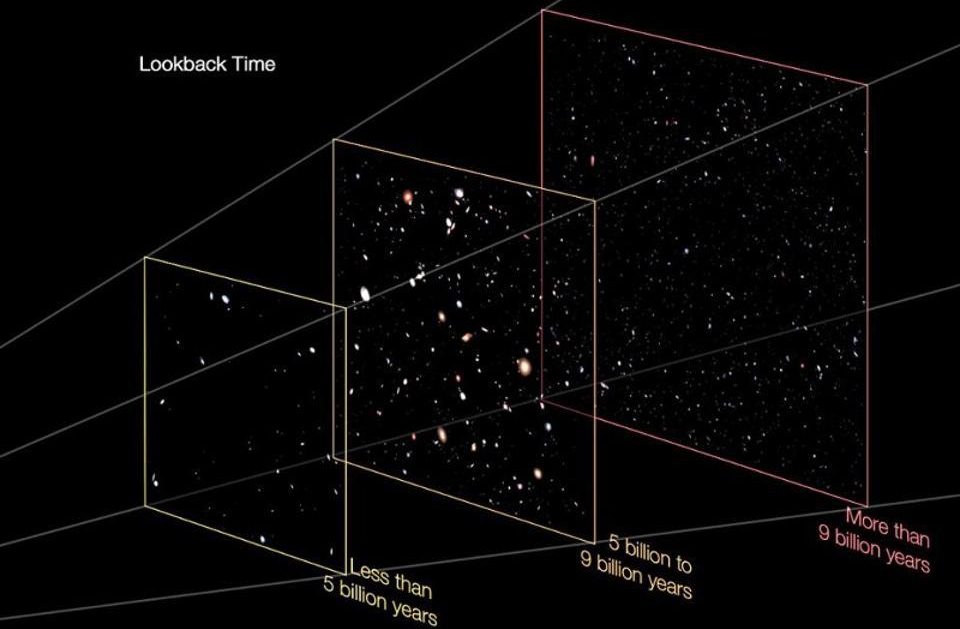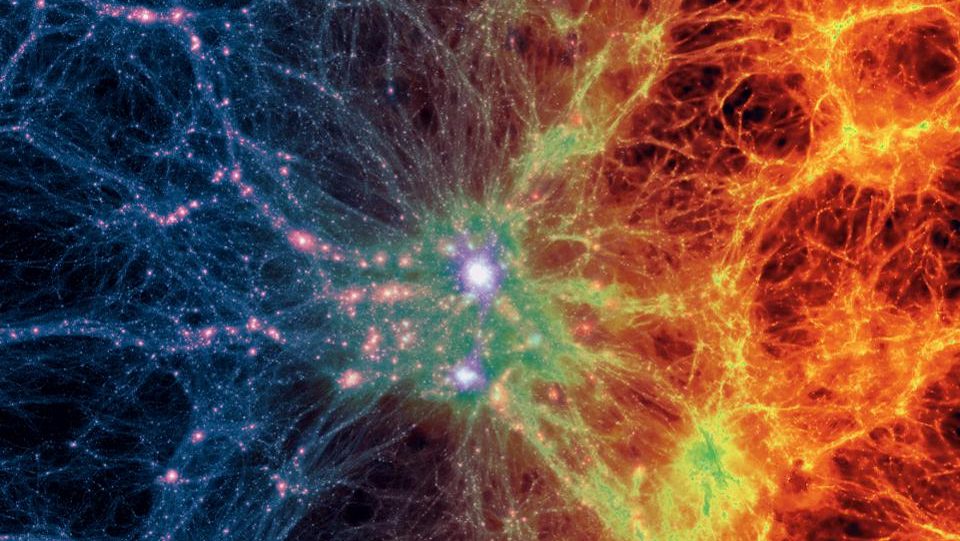Ask Ethan: Can Black Holes And Dark Matter Interact?
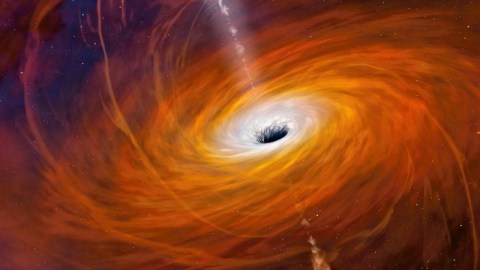
Black holes are regions of extreme gravity, but dark matter barely interacts at all. Do they play well together?
Black holes are some of the most extreme objects in the Universe: the only locations where there’s so much energy in a tiny volume of space that an event horizon gets created. When they form, atoms, nuclei, and even fundamental particles themselves are crushed down to an arbitrarily small volume — to a singularity — in our three-dimensional space. At the same time, everything that falls past the event horizon is forever doomed, simply adding to the black hole’s gravitational pull. What does that mean for dark matter? Patreon supporter kilobug asks:
How does dark matter interact with black holes? Does it get sucked into the singularity like normal matter, contributing to the mass of the black hole? If so, when the black hole evaporates through Hawking radiation, what happens to [it]?
To answer this, we have to start at the beginning: with what a black hole actually is.

Here on Earth, if you want to send something into space, you need to overcome the Earth’s gravitational pull. The way we normally think about this is in terms of balancing two forms of energy: the gravitational potential energy provided by the Earth itself at its surface, compared with the kinetic energy you’d have to add to your payload to escape from Earth’s gravitational pull.
If you balance these energies, you can derive your escape velocity: how fast you’d have to make an object go for it to eventually achieve an arbitrarily large distance away from the Earth. Even though the Earth has an atmosphere, providing resistance to that motion and requiring us to impart even more energy to a payload than the escape velocity would imply, escape velocity is still a useful physical concept for us to consider.
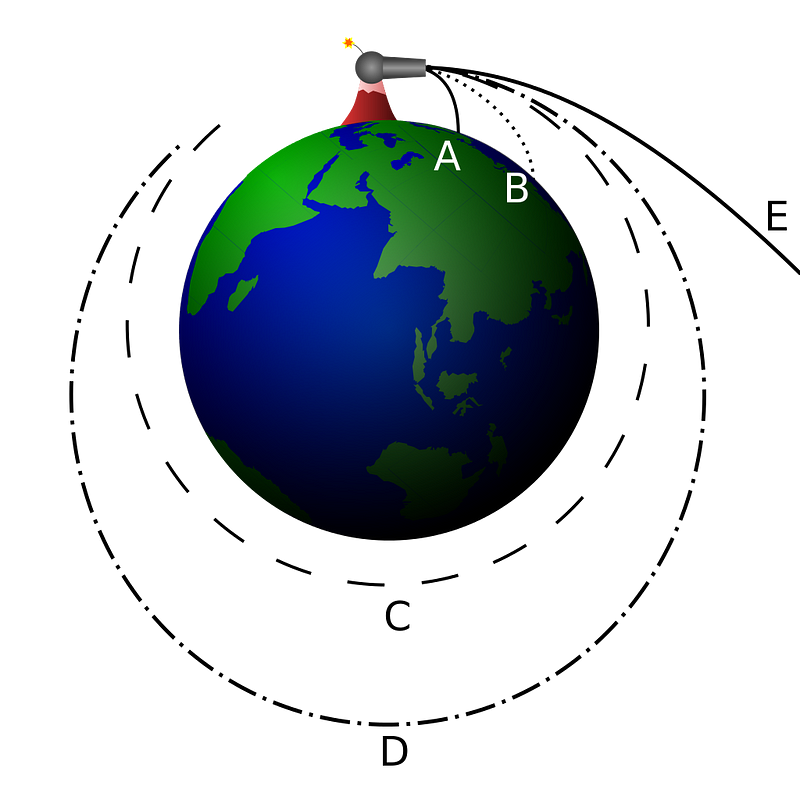
For our planet, that calculated speed — or escape velocity — is somewhere around 25,000 mph (or 11.2 km/s), which the rockets we’ve developed on Earth can actually achieve. Multi-stage rockets have been launching spacecraft beyond the reach of Earth’s gravity since the 1960s, and out of even the Sun’s gravitational reach since the 1970s. But this is still only possible because of how far away we are from the surface of the Sun at the location of Earth’s orbit.
If we were instead on the surface of the Sun, the speed we’d need to achieve to escape the Sun’s gravitational pull — escape velocity — would be much greater: about 55 times as great, or 617.5 km/s. When our Sun dies, it will contract down to a white dwarf, of about 50% the Sun’s current mass but only the physical size of Earth. In this case, its escape velocity will be about 4.570 km/s, or about 1.5% the speed of light.
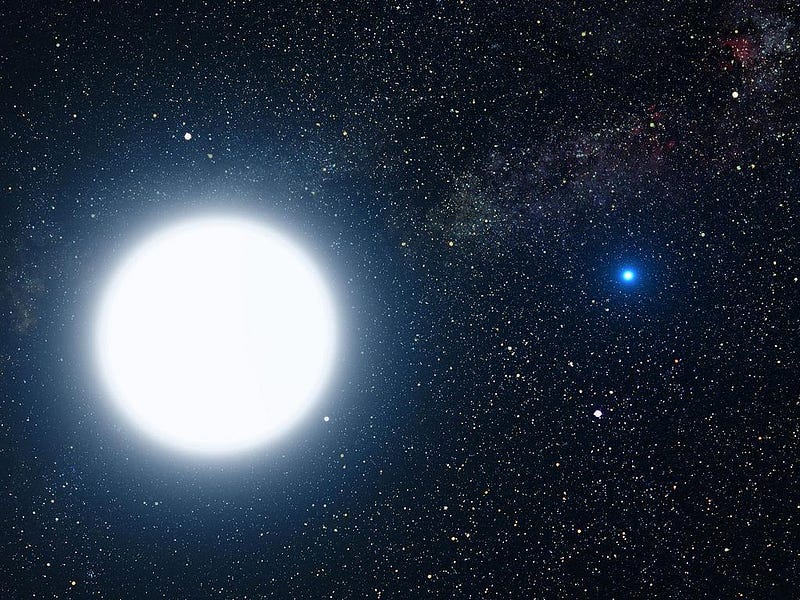
There’s a valuable lesson in comparing the Sun, as it is today, to the Sun’s far-future fate as a white dwarf. As more and more mass gets concentrated into a small region of space, the speed required to escape this object rises. If you allowed that mass density to rise, either by compressing it into a smaller volume or adding more mass to the same volume, your escape velocity would get closer and closer to the speed of light.
That’s the key limit. Once your escape velocity at the object’s surface reaches or exceeds the speed of light, it isn’t just that light can’t get out, it’s mandatory (in General Relativity) that everything within that object inevitably collapses down to and/or falls into the central singularity. The reason is simple: the fabric of space itself falls towards the central regions faster than the speed of light. Your speed limit is less than the speed at which the space beneath your feet moves, and hence, there’s no escape.
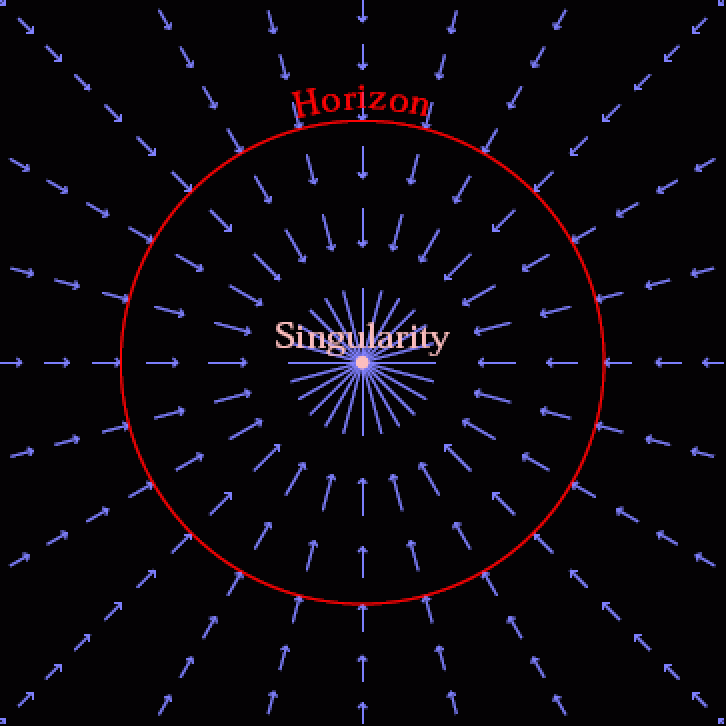
So if you’re at any point away from a central singularity and you’re trying to hold a more distant object up against gravitational collapse, you can’t do it; collapse is inevitable. And the most common way to crest past this limit in the first place is simple: just begin with a star more massive than about 20–40 times the mass of our Sun.
Like all true stars, it lives its life by burning through the nuclear fuel in its core region. When that fuel gets used up, the center implodes under its own gravity, creating a catastrophic supernova explosion. The outer layers are expelled, but the central region, being massive enough, collapses to a black hole. These “stellar mass” black holes, spanning an approximate range from 8-to-40 solar masses, will grow over time, as they consume any matter or energy that dares to venture too nearby. Even if you move at the speed of light when you cross the event horizon, you’ll never get out again.
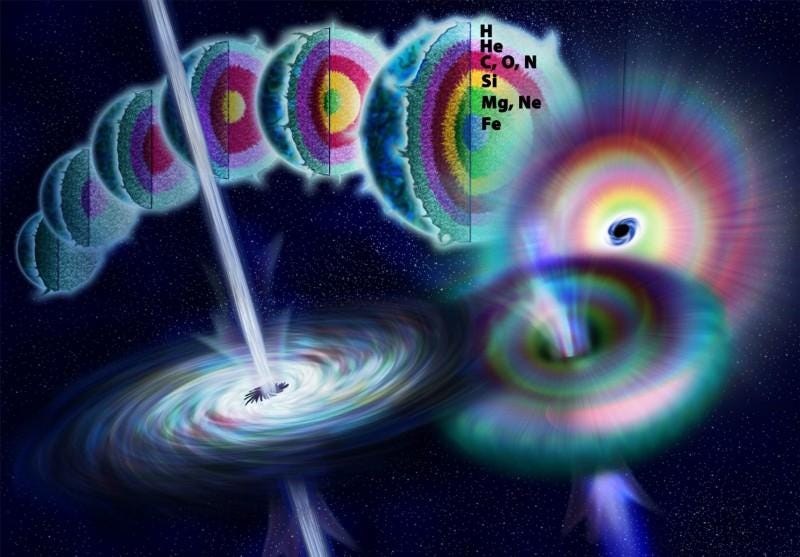
In fact, once you cross the event horizon, it’s an inevitability that you’ll encounter the central singularity. And from the perspective of an outside observer, once you cross the event horizon’s boundary, all you do is add to the mass, energy, charge, and angular momentum of the black hole.
From outside a black hole, we have no way to gain information about what it was initially composed of. A (neutral) black hole made from protons and electrons, neutrons, dark matter, or even antimatter would all appear identical. In fact, there are only three properties at all that we can observe about a black hole from an external location:
- its mass,
- its electric charge,
- and its angular momentum (or intrinsic rotational spin).
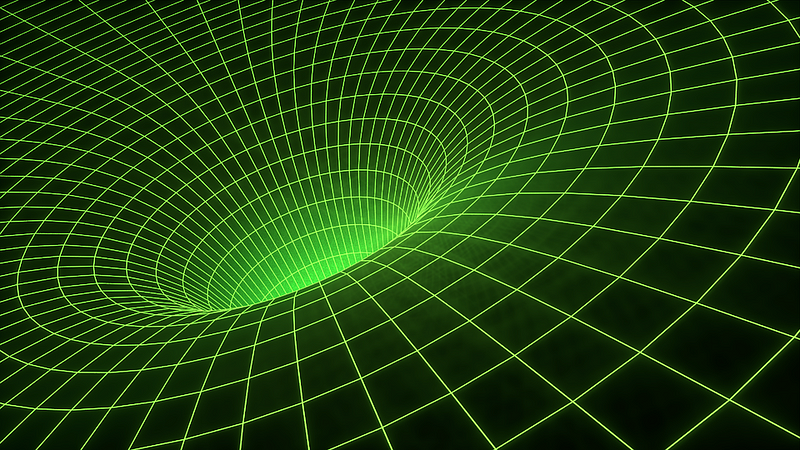
Dark matter, even though we know what it is, is known to have mass but not electric charge. The angular momentum it adds to the black hole is entirely dependent on its initial infalling trajectory. If you were interested in other quantum numbers — for example, because you were thinking about the black hole information paradox — you’d be chagrined to learn that dark matter doesn’t have them.
Dark matter has no color charge, baryon number, lepton number, lepton family number, etc. And because black holes form from the deaths of supermassive stars (i.e., normal, baryonic matter), the initial composition of a newly-formed black hole is always approximately 100% normal matter and 0% dark matter. Even though there’s no definitive way to tell what black holes are made of from the outside alone, we’ve witnessed the direct formation of a black hole from a progenitor star; no dark matter was involved.
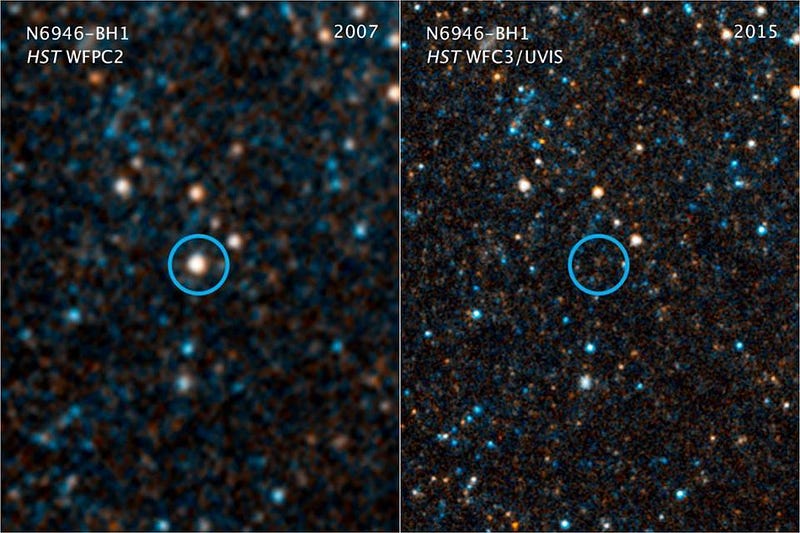
There’s a good reason to believe that dark matter doesn’t play a role in the initial formation of black holes, but will play a role in the growth of black holes over time: from the ways it does and does not interact.
Remember that dark matter interacts only gravitationally, unlike normal matter, which interacts via the gravitational, weak, electromagnetic and strong forces. Yes, there’s perhaps five times as much dark matter total in large galaxies and clusters as there is normal matter, but that’s summed up over the entire huge halo. In a typical galaxy, that dark matter halo extends for a million light-years or more, spherically, in all directions. Contrast that with the normal matter, which is concentrated in a disk that occupies just 0.01% the dark matter’s volume.
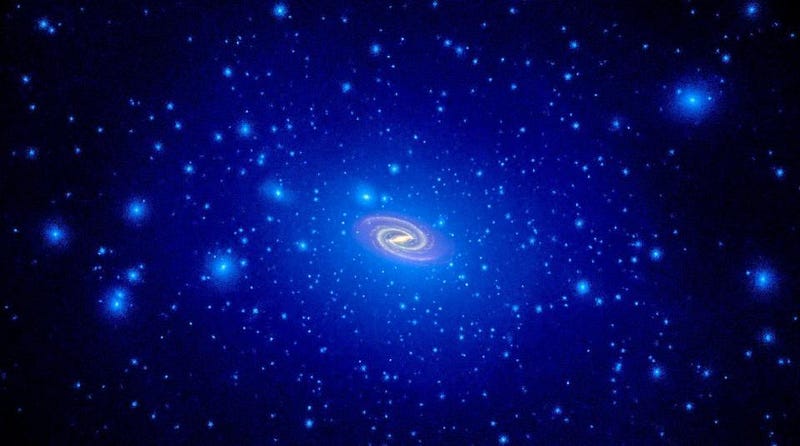
Black holes tend to form in the inner regions of the galaxy, where the normal matter is dominant over dark matter. Consider just the region of space where we’re located: around our Sun. If we drew a sphere that was 100 AU in radius (where one AU is the distance of the Earth from the Sun) around our Solar System, we’d enclose all the planets, moons, asteroids and pretty much the entire Kuiper belt. We’d also enclose a fair amount of dark matter in that volume.
Quantitatively, though, the baryonic mass — the normal matter — inside this sphere would be dominated by our Sun, and would weigh about 2 × 10³⁰ kg. (Everything else, combined, adds just another 0.2% to that total.) On the other hand, the total amount of dark matter in that same sphere? Only about 1 × 10¹⁹ kg, or just 0.0000000005% the mass of the normal matter in that same region. All the dark matter combined is about the same mass as a modest asteroid like Juno.

Over time, dark matter and normal matter both will collide with this black hole, getting absorbed and adding to its mass. The vast majority of black hole mass growth will come from normal matter and not dark matter, although at some point, about 10²² years into the future, the rate of black hole decay will finally surpass the rate of black hole growth.
The Hawking radiation process results in the emission of particles and photons from outside the black hole’s event horizon, conserving all the energy, charge and angular momentum from the black hole’s insides. Perhaps the information encoded on the surface is somehow encoded in the radiation, too: this is the essence of the black hole information paradox.
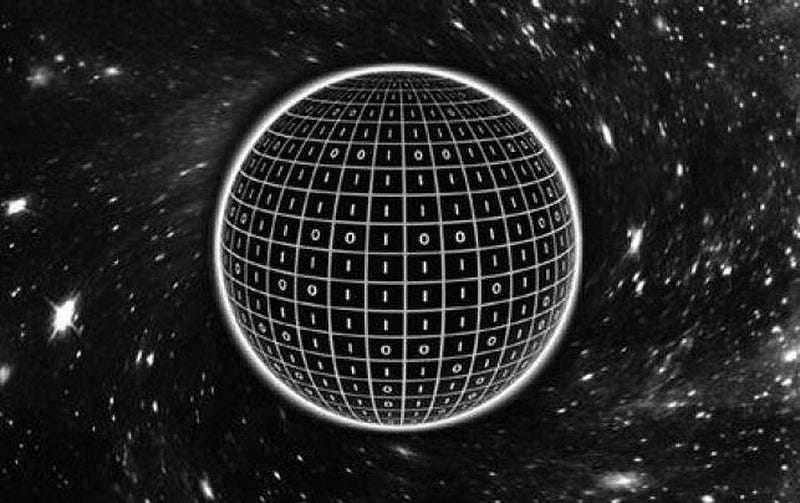
This process may take anywhere from 10⁶⁷ to 10¹⁰⁰ years, depending on the black hole’s mass. But what comes out is simply thermal, blackbody radiation.
This means that some dark matter will come out of black holes, but that’s expected to be completely independent of whether a substantial amount of dark matter went into the black hole in the first place. All a black hole has memory of, once things have fallen in, is a small set of quantum numbers, and the amount of dark matter that went into it isn’t one of them. What comes out, at least in terms of particle content, isn’t going to be the same as what you put in!
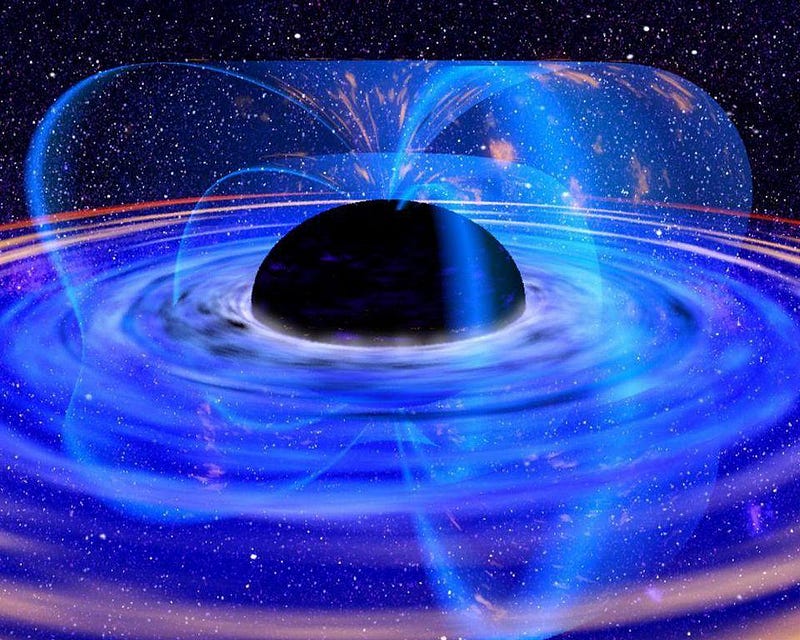
If you do the math, you’ll find that black holes will use both normal matter and dark matter as a food source, but that normal matter will dominate the rate of growth of the black hole, even over long, cosmic timescales. When the Universe is more than a billion times as old as it is today, black holes will still owe more than 99% of their mass to normal matter, and less than 1% to dark matter.
Dark matter is neither a good food source for black holes, nor is it (information-wise) an interesting one. What a black hole gains from eating dark matter is no different than what it gains from shining a flashlight into it. Only the mass/energy content, like you’d get from E = mc², matters. Black holes and dark matter do interact, but their effects are so small that even ignoring dark matter entirely still gives you a great description of black holes: past, present, and future.
Send in your Ask Ethan questions to startswithabang at gmail dot com!
Ethan Siegel is the author of Beyond the Galaxy and Treknology. You can pre-order his third book, currently in development: the Encyclopaedia Cosmologica.